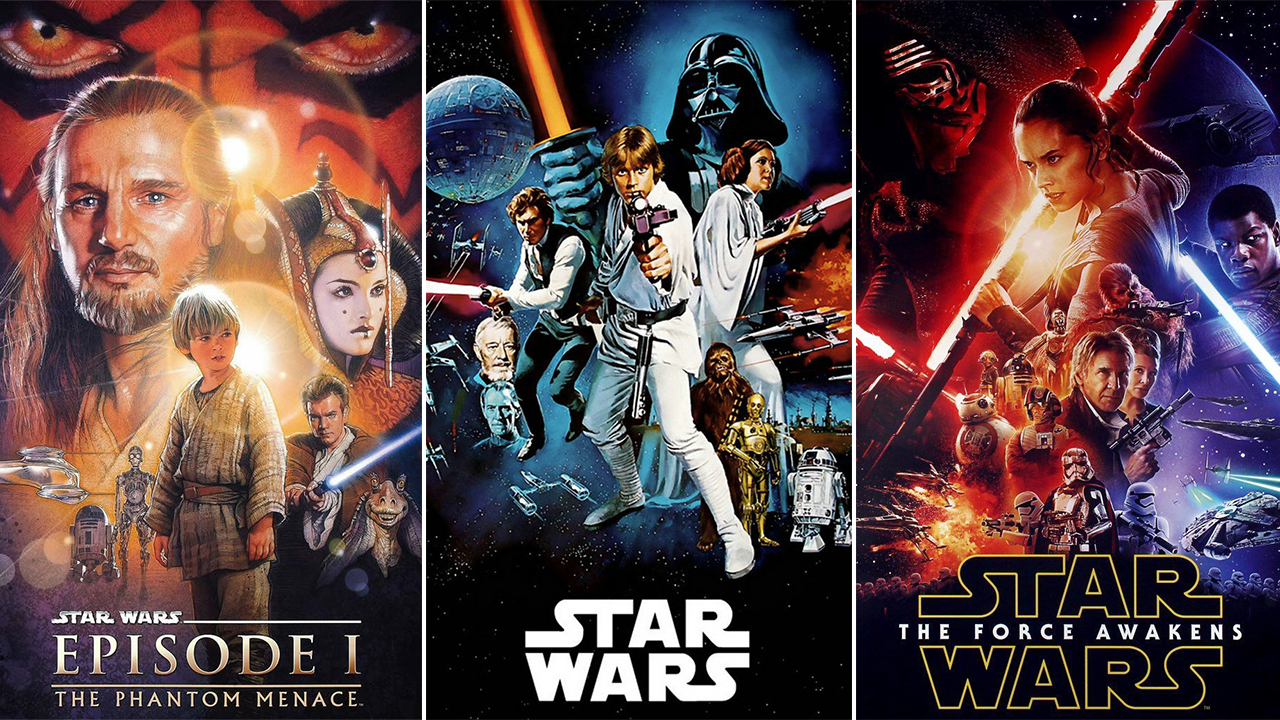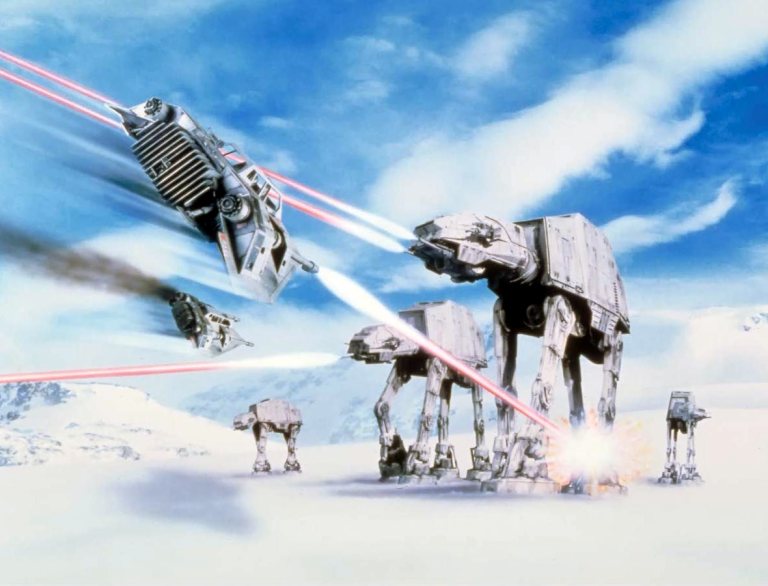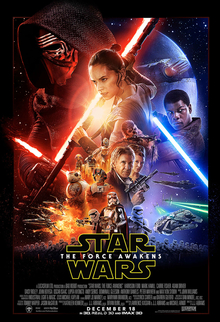What Is The Release Order Of The Star Wars Movies?
Ah, Star Wars, the epic saga that has captured the hearts of millions across the galaxy. Whether you’re a die-hard fan or just someone who appreciates a good space adventure, you’ve probably found yourself wondering about the release order of the Star Wars movies. Well, fear not, my fellow Jedi enthusiasts, for I am here to guide you through the chronological release of these iconic films.
Now, I know what you’re thinking. “Why should I care about the release order? Can’t I just watch them in any order I want?” Well, my friend, while you certainly have the freedom to do so, there is something special about experiencing the Star Wars saga in the same order as the rest of the world did. It allows you to witness the growth and development of the story and characters in the same way that fans did when these movies first hit the big screen. So, without further ado, let’s dive into the release order of the Star Wars movies and embark on a journey to a galaxy far, far away.
1. Episode IV: A New Hope (1977)
2. Episode V: The Empire Strikes Back (1980)
3. Episode VI: Return of the Jedi (1983)
4. Episode I: The Phantom Menace (1999)
5. Episode II: Attack of the Clones (2002)
6. Episode III: Revenge of the Sith (2005)
7. Episode VII: The Force Awakens (2015)
8. Episode VIII: The Last Jedi (2017)
9. Episode IX: The Rise of Skywalker (2019)
This is the order in which the movies were released in theaters. However, if you prefer to watch the movies in chronological order according to the story, you can start with Episode I and follow the numerical order.

Understanding the Release Order of the Star Wars Movies
Star Wars is a beloved and iconic film franchise that has captured the hearts of millions of fans worldwide. With its epic storytelling, memorable characters, and groundbreaking visual effects, it has become a cultural phenomenon. However, with numerous movies, TV series, and spin-offs, it can be a bit confusing to keep track of the release order of the Star Wars movies. In this article, we will break down the chronological order in which the films were released, allowing you to experience the galaxy far, far away in the intended order.
The Original Trilogy: A New Hope, The Empire Strikes Back, and Return of the Jedi
The journey into the Star Wars universe began with the release of “Star Wars: Episode IV – A New Hope” in 1977. Directed by George Lucas, this film introduced audiences to Luke Skywalker, Princess Leia, Han Solo, and the villainous Darth Vader. It quickly became a cultural sensation and revolutionized the way movies were made.
The success of A New Hope led to the release of “Star Wars: Episode V – The Empire Strikes Back” in 1980. Considered by many as the best film in the series, it deepened the mythology and introduced iconic moments like the revelation of Darth Vader’s true identity. The original trilogy concluded with “Star Wars: Episode VI – Return of the Jedi” in 1983, providing a satisfying conclusion to the story of the Rebel Alliance’s battle against the Empire.
Impact and Legacy
The original Star Wars trilogy had a profound impact on popular culture. It spawned a passionate fan base and inspired countless filmmakers and storytellers. The films’ success also led to the creation of a vast expanded universe, including books, comics, and animated series that further explored the galaxy far, far away.
The release order of the Star Wars movies was not always straightforward due to the addition of prequels and sequels. However, understanding the chronological order in which the films were released is essential to fully immerse yourself in the Star Wars saga. Let’s explore the other installments in the franchise.
The Prequel Trilogy: The Phantom Menace, Attack of the Clones, and Revenge of the Sith
After the original trilogy, George Lucas decided to delve into the backstory of the Star Wars universe with the prequel trilogy. “Star Wars: Episode I – The Phantom Menace” was released in 1999, taking audiences back to a time before Luke Skywalker and Darth Vader. It introduced new characters such as Qui-Gon Jinn, Obi-Wan Kenobi, and the young Anakin Skywalker.
In 2002, “Star Wars: Episode II – Attack of the Clones” continued the prequel storyline, focusing on the growing threat of the Sith and the budding romance between Anakin and Padmé Amidala. The trilogy concluded with “Star Wars: Episode III – Revenge of the Sith” in 2005, depicting the fall of Anakin Skywalker and his transformation into Darth Vader.
Expanding the Star Wars Universe
The prequel trilogy expanded the Star Wars universe by exploring the rise of the Empire, the Jedi Order, and the tragic downfall of Anakin Skywalker. Despite mixed reception from fans and critics, these films added depth and complexity to the overall narrative.
Now that we have covered the original and prequel trilogies, let’s move on to the sequel trilogy and other standalone films in the Star Wars franchise.
The Sequel Trilogy: The Force Awakens, The Last Jedi, and The Rise of Skywalker
Years after the original trilogy, the Star Wars saga continued with the sequel trilogy. “Star Wars: Episode VII – The Force Awakens” was released in 2015, introducing a new generation of characters such as Rey, Finn, and Kylo Ren. Directed by J.J. Abrams, this installment brought back the magic and nostalgia of the original films while introducing new storylines and mysteries.
In 2017, “Star Wars: Episode VIII – The Last Jedi” expanded on the sequel storyline, delving deeper into the conflict between the Resistance and the First Order. Directed by Rian Johnson, the film challenged traditional Star Wars tropes and brought a fresh perspective to the franchise.
The sequel trilogy concluded with “Star Wars: Episode IX – The Rise of Skywalker” in 2019. Directed by J.J. Abrams, this film wrapped up the Skywalker saga and provided closure to the storylines of both the original and sequel trilogies.
The Expanded Star Wars Universe
In addition to the main saga films, the Star Wars franchise has expanded with standalone films such as “Rogue One: A Star Wars Story” and “Solo: A Star Wars Story,” which provide further insights into the galaxy and its characters. These standalone films can be enjoyed independently or as part of the larger Star Wars saga.
It is important to note that the release order of the Star Wars movies may differ from the chronological order within the story. For those new to the franchise, watching the films in the release order allows for a more immersive and organic experience.
Conclusion
The release order of the Star Wars movies is crucial to fully appreciate the saga’s narrative and character arcs. Starting with the original trilogy, moving through the prequels, and concluding with the sequels provides a comprehensive understanding of the story’s evolution. Additionally, exploring the expanded universe through standalone films and other media offers a deeper dive into the rich galaxy far, far away. Whether you are a lifelong fan or new to the Star Wars universe, experiencing the films in the intended release order will ensure a captivating and fulfilling journey through this beloved franchise.
Key Takeaways: What is the release order of the Star Wars movies?
- The release order of the Star Wars movies is important to understand the storyline.
- The original trilogy, consisting of Episode IV: A New Hope, Episode V: The Empire Strikes Back, and Episode VI: Return of the Jedi, was released first.
- Next came the prequel trilogy, which includes Episode I: The Phantom Menace, Episode II: Attack of the Clones, and Episode III: Revenge of the Sith.
- After that, the sequel trilogy was released, starting with Episode VII: The Force Awakens, followed by Episode VIII: The Last Jedi, and concluding with Episode IX: The Rise of Skywalker.
- There are also standalone films, such as Rogue One: A Star Wars Story and Solo: A Star Wars Story, which fit into the overall Star Wars timeline.
Frequently Asked Questions
1. What is the chronological order of the Star Wars movies?
The Star Wars movies were released in a non-linear order, so the chronological order of the films is different from the release order. If you want to watch the movies in chronological order according to the events in the Star Wars universe, you should follow this order:
1. Episode I: The Phantom Menace
2. Episode II: Attack of the Clones
3. Episode III: Revenge of the Sith
4. Episode IV: A New Hope
5. Episode V: The Empire Strikes Back
6. Episode VI: Return of the Jedi
7. Episode VII: The Force Awakens
8. Episode VIII: The Last Jedi
9. Episode IX: The Rise of Skywalker
2. What is the release order of the Star Wars movies?
The Star Wars movies were released in a different order than the chronological order of the events in the story. The release order of the movies is as follows:
1. Episode IV: A New Hope (1977)
2. Episode V: The Empire Strikes Back (1980)
3. Episode VI: Return of the Jedi (1983)
4. Episode I: The Phantom Menace (1999)
5. Episode II: Attack of the Clones (2002)
6. Episode III: Revenge of the Sith (2005)
7. Episode VII: The Force Awakens (2015)
8. Rogue One: A Star Wars Story (2016)
9. Episode VIII: The Last Jedi (2017)
10. Solo: A Star Wars Story (2018)
11. Episode IX: The Rise of Skywalker (2019)
3. Should I watch the Star Wars movies in release order or chronological order?
Whether you should watch the Star Wars movies in release order or chronological order depends on your personal preference. Watching the movies in release order allows you to experience the story as it was originally released and understand the cultural impact of each film. On the other hand, watching the movies in chronological order provides a different perspective and allows you to follow the story in a linear fashion.
If you are new to the Star Wars franchise, it is generally recommended to watch the movies in release order to fully appreciate the storytelling and surprises along the way. However, if you are already familiar with the story and want to explore the events in chronological order, watching the movies in that order can provide a deeper understanding of the Star Wars universe.
4. Are the Star Wars spin-off movies essential to the main story?
The Star Wars spin-off movies, such as Rogue One: A Star Wars Story and Solo: A Star Wars Story, are not essential to the main story but they do provide additional context and expand upon certain events or characters. These spin-off movies are standalone films that complement the main saga, offering new perspectives and stories within the Star Wars universe.
While the spin-off movies can enhance your overall Star Wars experience, they are not necessary to understand the main story line. If you are a casual viewer or want to focus solely on the main saga, you can skip the spin-off movies without missing crucial plot points.
5. Are there any upcoming Star Wars movies?
As of now, there are no announced Star Wars movies scheduled for release in the immediate future. However, Lucasfilm, the production company behind Star Wars, has expressed plans to continue expanding the franchise with new films and television series. Keep an eye out for future announcements and updates from Lucasfilm for any upcoming Star Wars movies.
The BEST Order To Watch STAR WARS | Mashable Explains
Final Summary: The Epic Journey of Star Wars Movies
In a galaxy far, far away, the Star Wars movies have taken us on an unforgettable adventure spanning decades. From the iconic opening crawl to the thrilling lightsaber battles, these films have captured the hearts of fans young and old. In this final summary, let’s take a moment to reflect on the release order of the Star Wars movies and appreciate the epic journey they have taken us on.
The release order of the Star Wars movies is a testament to the enduring popularity and enduring legacy of the franchise. It all began in 1977 with “Star Wars: Episode IV – A New Hope,” introducing us to Luke Skywalker, Princess Leia, and the battle between the Rebel Alliance and the evil Galactic Empire. This groundbreaking film set the stage for a cultural phenomenon that would span generations.
Over the years, the Star Wars saga continued to captivate audiences with its sequels and prequels. “Star Wars: Episode V – The Empire Strikes Back” and “Star Wars: Episode VI – Return of the Jedi” expanded the universe and deepened the characters’ journeys. Then, in the late 1990s, the prequel trilogy was released, starting with “Star Wars: Episode I – The Phantom Menace” and followed by “Star Wars: Episode II – Attack of the Clones” and “Star Wars: Episode III – Revenge of the Sith.” These films delved into the origins of Darth Vader and the rise of the Sith.
In 2015, the franchise made a triumphant return with “Star Wars: Episode VII – The Force Awakens,” introducing a new generation of characters like Rey, Finn, and Kylo Ren. This was followed by “Star Wars: Episode VIII – The Last Jedi” and “Star Wars: Episode IX – The Rise of Skywalker,” concluding the main Skywalker saga.
The release order of the Star Wars movies has allowed fans to experience the story in a chronological and narrative sequence, uncovering the mysteries and connections between characters along the way. Whether you’re a die-hard fan who has seen every film multiple times or a newcomer to the galaxy, the release order provides a cohesive and immersive viewing experience.
So, grab your lightsaber, hop in your starship, and embark on this epic journey through the Star Wars movies. May the Force be with you, always.






